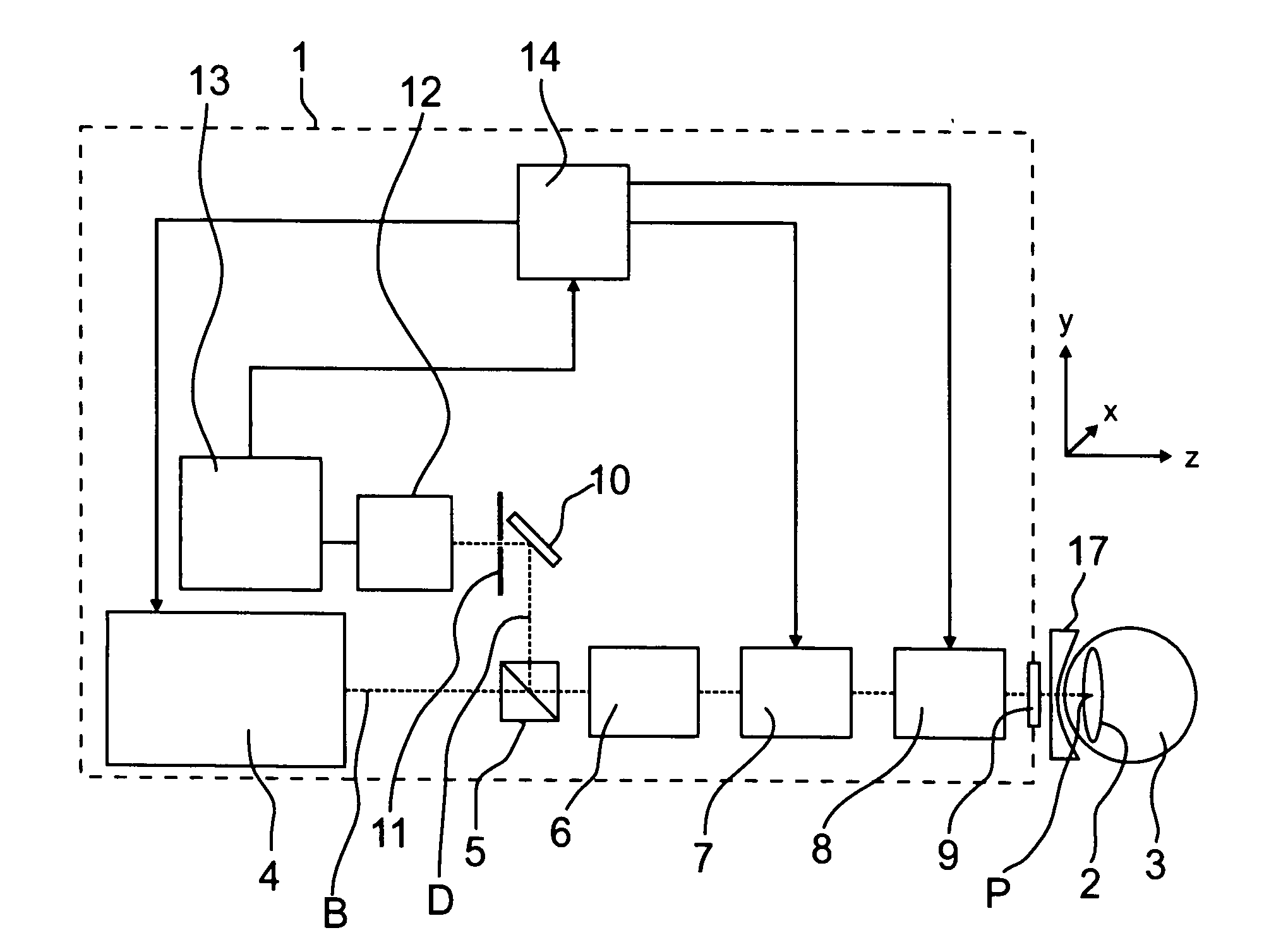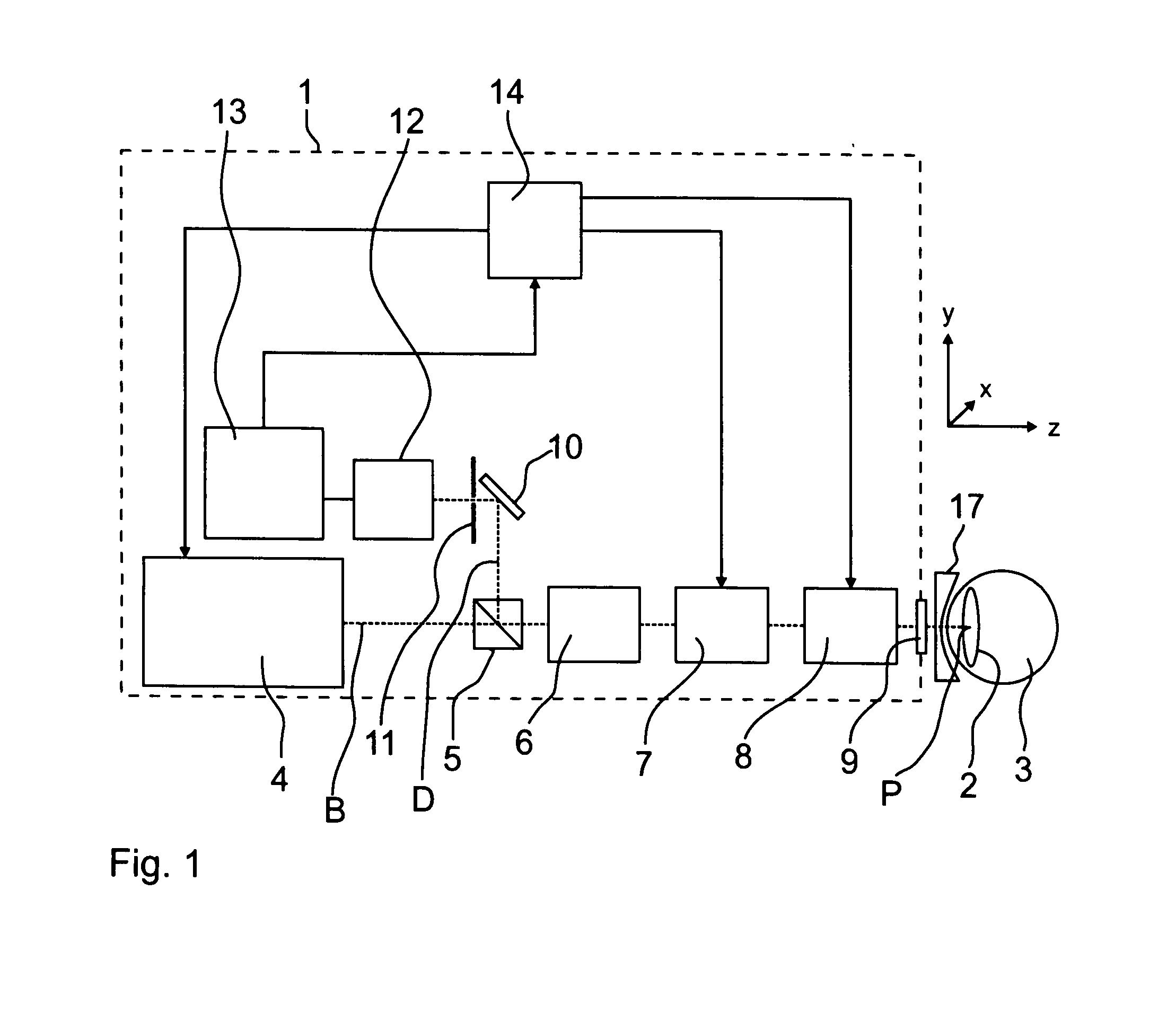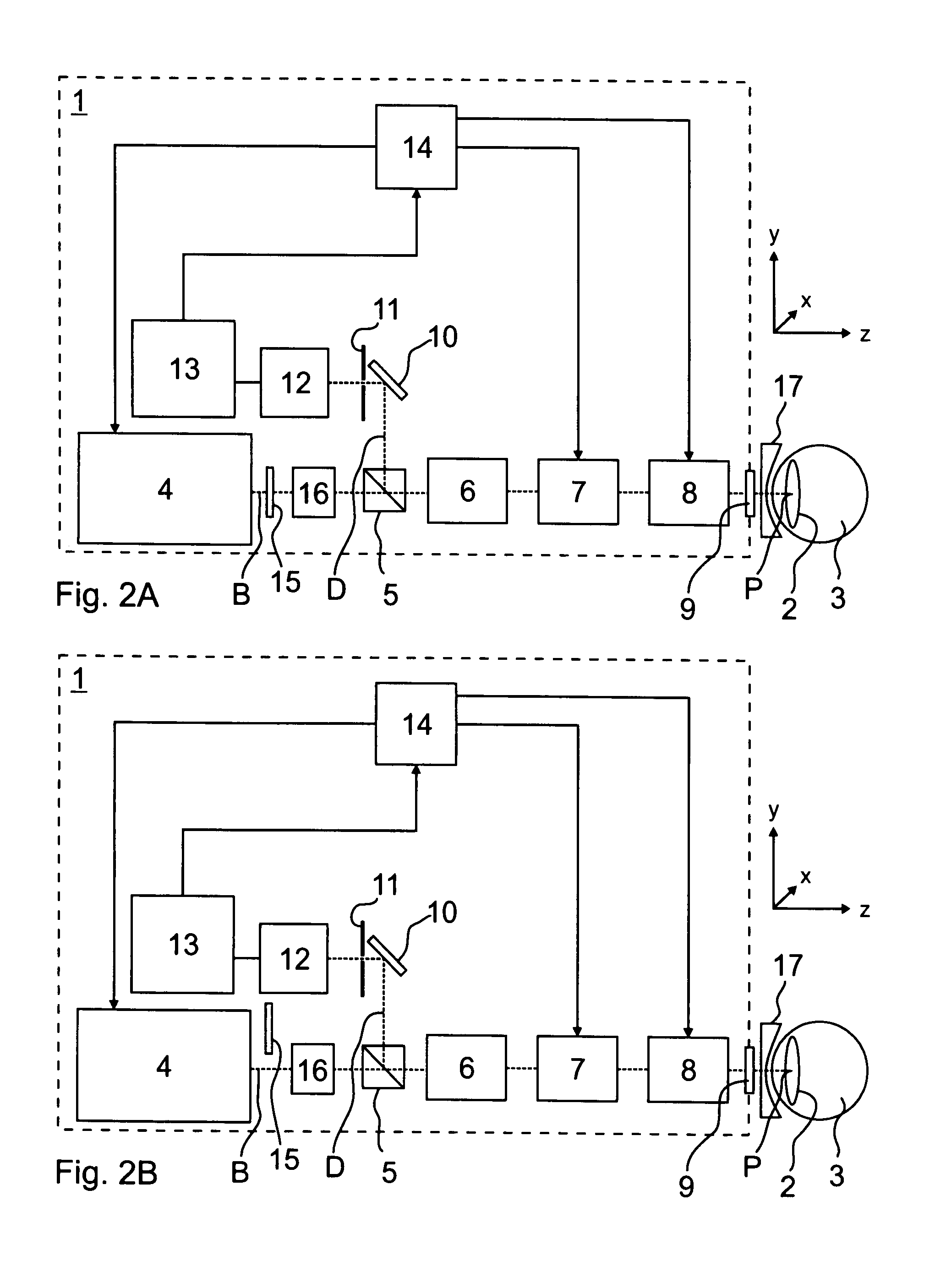Ophthalmological laser system and operating method
a laser system and laser technology, applied in the field of ophthalmological laser systems, can solve the problems of low intensity of light backscattered in the eye lens, relatively large number of detection flaws, etc., and achieve the effect of high accuracy, great accuracy and great accuracy
- Summary
- Abstract
- Description
- Claims
- Application Information
AI Technical Summary
Benefits of technology
Problems solved by technology
Method used
Image
Examples
Embodiment Construction
[0035]FIG. 1 shows an exemplary ophthalmological laser system 1 for the analysis of a presbyopia of an eye lens 2 of an eye 3. The laser system 1 comprises a laser 4, a polarization beam splitter 5, scan optics 6, a scanner unit 7, focusing optics 8, and an optical phase retardation system 9, which together form an illumination beam path B; as well as a deflection mirror 10, a confocal aperture diaphragm 11, and a detector 12, which form a decoupled detection beam path D; and an amplifier 13 and a control unit 14.
[0036]Between the laser system 1 and the eye 3, a contact glass 17 with an immobilization device for the eye 3 is positioned, behind which lies the examination region. Other embodiments for the realization of the solution, according to the invention, are possible (not depicted).
[0037]For example, the laser 4 is designed as pulsed TiSa infrared laser with a pulse length between 100 fs and 1000 fs. It emits laser radiation at an eye-safe illumination laser power in the range ...
PUM
 Login to View More
Login to View More Abstract
Description
Claims
Application Information
 Login to View More
Login to View More - R&D
- Intellectual Property
- Life Sciences
- Materials
- Tech Scout
- Unparalleled Data Quality
- Higher Quality Content
- 60% Fewer Hallucinations
Browse by: Latest US Patents, China's latest patents, Technical Efficacy Thesaurus, Application Domain, Technology Topic, Popular Technical Reports.
© 2025 PatSnap. All rights reserved.Legal|Privacy policy|Modern Slavery Act Transparency Statement|Sitemap|About US| Contact US: help@patsnap.com



